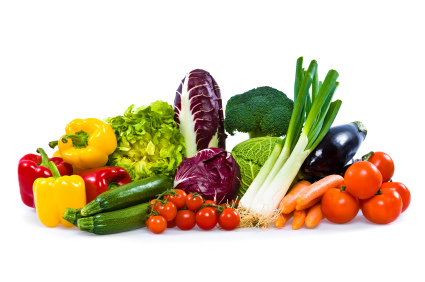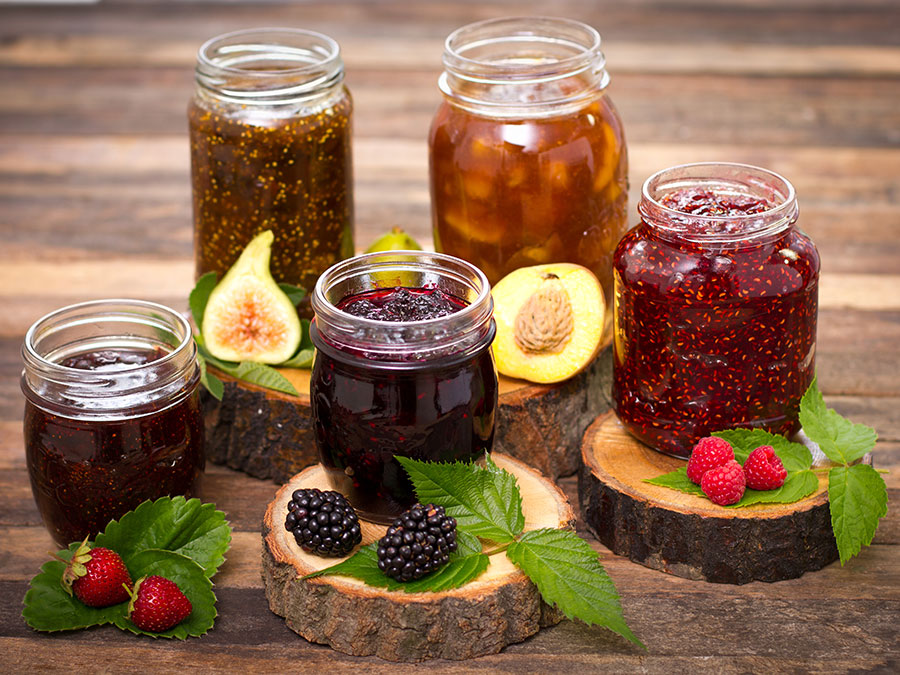Fruits and Vegetables Guide
“Vegetable” is actually not a scientific term and simply refers to the edible part of the plant: roots or tubers, stems, leaves, etc. We think of mushrooms as vegetables, but they’re technically fungi and not plants at all.
Whereas fruit is the sweet, fleshy, edible part of a plant. It generally contains seeds. Fruits are usually eaten raw, although some varieties can be cooked. They come in a wide variety of colours, shapes and flavours. We often assume that fruits are always sweet, but that’s not necessarily true.
Fruits and vegetables are at their best when they’re grown and harvested in their natural seasons. Depending on region, growing seasons and crop availability will vary in fruits & vegetables. Some items like greens, carrots, beets, and radishes may be harvested year-round

Importance of fruit & vegetables in our daily life
Fruit and vegetables should be an important part of your daily diet. They are naturally good and contain vitamins and minerals that can help to keep you healthy. They can also help protect against some diseases.
Fruits and vegetables contain many vitamins and minerals that are good for our health. These include vitamins A (beta-carotene), C and E, magnesium, zinc, phosphorous and folic acid. Folic acid may reduce blood levels of homocysteine, a substance that may be a risk factor for coronary heart disease.
- They are alkaline producing, which can help to preserve bone mass and muscle tissue.
- They are rich in antioxidants, vitamins, minerals, fibre, and phyto nutrients.
- They contain lots of water to help you stay hydrated.
- Because fruits and vegetables have a high water and fibre content, they’re low in calories relative to their volume. Consuming them on a regular basis can result in a higher volume of food intake.
- Since humans consume a consistent volume of food, a high consumption of low calorie density foods can help to control overall food intake and manage body weight.
Color pigment in our fruits & vegetable and its importance

Orange and yellow pigments– generally found in fruits and vegetables such as oranges, sweet potatoes, pumpkins, and carrots are colored by carotenoids. Beta-carotene is the precursor for vitamin A which may reduce the risk of cancer and heart disease, improve immune function, and decrease the risk of age-related macular degeneration.
Green color pigment: – Generally found in all green vegetable such as spinach, kale, green pepper, honey dew melon, green apples, kiwi, lettuce zucchini, and broccoli.by chlorophyll. Dark leafy greens contain folate which is a very important nutrient for women’s health especially during pregnancy. They also contain a chemical called lutein which is integral to healthy eyesight.
White color pigment- Included in this group are cauliflower, garlic, ginger, onions and mushrooms etc by pigments called anthoxanthins and also contain sulforaphane. These pigments contain healthy chemicals such as allicin which may reduce cholesterol and high blood pressure and reduces the risk of stomach cancer. Included in this group are bananas, garlic, ginger, onions and mushrooms.
Red color pigment – like tomatoes and watermelon. These contain lycopene, which is thought to be important for fighting prostate cancer and heart disease
How do we classify all vegetables according to culinary use?
Vegetables are available in many varieties and can be classified in these groups or ‘families’:
- Leafy green vegetables – lettuce, spinach and silver beet etc.
- Flowery & Bud Vegetables – cabbage, artichoke, cauliflower, Brussels sprouts and broccoli etc.
- Fruit vegetables-Butternuts, bottle Gourd, lady finger, tomato, cucumber, bell pepper etc.
- Root or tuber vegetables– potato, sweet potato and yam etc.
- Edible plant stem vegetable – celery, Lotus stem (Kamal kakri) and asparagus etc.
- Allium or Bulb vegetables – onion, garlic and shallot etc
- Fungi vegetables– All types of mushrooms like shitake, button mushroom, enoki, cloud ear etc.
How do we classify Fruits according to culinary use.
- Citrus fruits – oranges, grapefruits, mandarins and , Malta or Kinnoo, Budhha hand etc
- Stone fruit – nectarines, apricots, peaches and plums, avocado
- Berries fruit– strawberries, raspberries, blueberries, kiwifruit, black currants and passionfruit etc.
- Tropical fruits– Banana, melons, mango, Durian fruit, lychee, pineapple, star fruit, mangosteen papaya, Dragan fruit, etc.
How to Select fruits and vegetables
Try to buy fruits and vegetables that are in season, and choose for freshness and quality. You should:
- Eat with the seasons – this is nature’s way of making sure our bodies get a healthy mix of nutrients and plant chemicals
- Try something new – try new recipes and buy new fruit or vegetables as part of your weekly shopping
- Let colours guide you – get different combinations of nutrients by putting a ‘rainbow’ of colours (green, white, yellow–orange, blue–purple, red) on your plate.
Our ingredients profiles provide more information on fruits and vegetable
Various Rules For Vegetable Preparation
- Do not let the vegetable soak in water unless necessary.
- Wash the vegetables just before peeling.
- Cook or bake the vegetable in their skin.
- Use the minimum amount of liquid during boiling.
- Use the water in which the vegetables are boiled (pot liquor).
- Use the correct cooking medium which can be acidic, alkali or neutral.
- Cut the vegetable as near to the cooking time as possible.
- Serve the food as soon as it is ready for the service.
- Keep the oxygen away from the vitamin-rich foods by covering them with water.
- For uniform doneness, cut into uniform sizes before cooking.
- If vegetable must be cooked in advance, slightly undercook them, cool rapidly in cold water, drain and refrigerate, then reheat to order.
How to Retain the color of Green Vegetables
- Cook them uncovered to allow the vegetables volatile acid to escape. when the vegetables are cooked with a cover, the plants natural acid in leeched into the cooking liquid and is trapped there creating an acidic cooking medium. This combined with the heat present and destroys the pigment.
- Cook them quickly until just “Al Dente”, Extended exposure to heat will destroy the color.
- Steam Green vegetables whenever possible, this shorten the cooking time, allows for less acid build-up and retain more color.
The best way to cook vegetables–
Vegetables are cooked to develop color, texture, and flavor. Because of the vast varieties, cooking methods vary depending on the desired end result. In professional foodservice production vegetables are often blanched or par cooked in boiling salted water and finished by other cooking methods such as sautéing, frying, or roasting. Equally important in this process is the added step of shocking the vegetables in an ice water bath, which brightens and sets the color making them more visually appealing.
Blanching of vegetables – To briefly cook for from 30 seconds up to two minutes. This method is used for tomato concassé or stone fruits like peaches to loosen the skin for peeling. It is also used for tender leafy greens and herbs (spinach or basil.)
Par Boil/Par Cook – Partially cooking for a longer time than the blanching process. This may mean cooking the ingredient half-way or more for finishing on the service line. This method is also applied to vegetables, pasta, rice and other grains.
Sous Vide cooking of vegetables-
Cooking by the sous vide method is done in a vacuum package with an immersion circulator or hot water bath at190 °F / 88 °C. The vegetables are trimmed, lightly seasoned, oiled and sealed. The cooking temperature and method are similar to poaching. The advantage of vacuum packaging is that it locks in all the flavors of the vegetables.
Braise/Stewing of vegetables
It is done for root vegetables mainly and generally cooked with tougher meat or for making Indian vegetable curry. The vegetable must be cut into larger size. Braising is a Combination cooking method begin by searing or sweating the ingredients in fats and then adding liquids. Braises are simple preparations of leeks or celery, heartier items of braised cabbage or sauerkraut, or complex ones including ratatouille and Moroccan vegetable tagine. Aromatics including onions or shallots, and garlic are layered with bacon, ham, or salt pork.
Grilling & Broiling of vegetables-
Grilling and broiling vegetables provides a rustic compliment to menus. A variety of vegetables do well on the grill, but some stand outs include asparagus, corn, eggplant, mushrooms, peppers, onions, tomatoes, along with summer and winter squash varieties. With extra care, cabbage and other leaf vegetables like radicchio, endive, or romaine can also be grilled.
Grilling and broiling of vegetables is typically done at a lower temperature than meats, from approximately 375-450 °F/190-230˚C. The vegetables are often sliced, seasoned, and tossed or brushed with oil before grilling. Marinades or vinaigrettes can also be incorporated either before or after cooking.

Roasting & Baking of vegetables-
Heat and surface area are important in roasting because the smaller the vegetables are cut the higher the oven temperature needs to be. Halved winter squashes should be cooked at 350˚F/175˚C degrees while smaller cut vegetables including asparagus, beans, or zucchini will need a hotter oven, about 425˚F/220˚C. The vegetables are tossed with salt, pepper and oil. Additional spices can be added as desired. Fresh herbs are usually added at the end of the roasting process. Spread the vegetables out in a single layer to facilitate browning.
Cooking of Fruits
Preparing and Pureeing Fruit: Fruit purees and sauces make appetizing additions to desserts and even savory dishes. For purees and some sauces, place the fruit in a roomy saucepan over gentle heat so it cooks evenly. Stir constantly then either mash the fruit with a fork and sieve or whizz in a blender.
For coulis (usually made with soft or stone fruits), the fruit can often just be mashed or blended in a food processor and then sieved before serving
Other Methods of Cooking Fruits: Boiling is too fierce for delicate fruits, but gentle simmering preserves their texture. For soft and stone fruits, the fruit should simply be warmed through in the liquid. Poach fruit in a single layer so the heat can reach all the pieces evenly – use a deep frying pan rather than a saucepan.
Fruit poaches well in most liquids, from plain water to dense sugar syrup too. A standard method for poaching is to bring the liquid to a simmer then gently place the fruit in with a spoon. Reduce the heat immediately so the liquid is barely bubbling, and cook until tender.
Stewing is a similar method, often using a covered saucepan and just enough liquid to cover the fruit and keep it moist. The fierce heat from a grill or barbecue concentrates the sugars and can cause the fruit to blacken before it’s cooked through, so you’ll need to keep an eye on it – but the results can be a revelation. Thread small pieces of evenly sized fruit on to skewers to stop them falling through the barbecue rack or grill large slices of fruit such as pineapple or mango.
Preserving Fruits

Fruit can be made into jams, jellies, pickles, and chutneys, or can be bottled whole. The most suitable method of preserving depends on the type of fruit and its quality and ripeness. Under-ripe fruit is fine for chutneys, jams and jellies but over-ripe fruit is only good for making chutney and shouldn’t be used for making jam.
Drying is also a delicious way of preserving fruits and intensifies their flavours and most fruits can be dried effectively.
